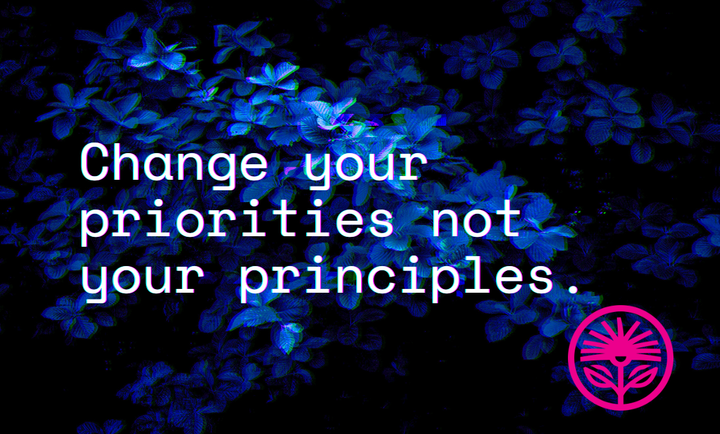Your market, their mind — Kelford Labs Weekly
What you can ask to know what to say.

Note: This post includes two visualizations of the concepts I’m discussing (they’ll open in your browser). But, I’d like to know, are they clear? Do they help? Please reply to this email and let me know if the visualizations clarified or confused.

The “market” for a particular product or service doesn’t exist out there in objective reality.
It exists in the mind of the buyer.
Your market exists in the mind of your prospect.
Which means, as a business owner, our goal is to understand and (to the extent possible) influence how that market forms and the direction the buyer takes through it.
How influenceable they’ll be is affected by who they are, their preferences and values.
Where in the market they appear depends on their specific needs and context.
When they appear in the market changes based on seasonality and circumstances.
And why they appear where and when they do is affected by their urgency.
But there’s no one question you can ask, or one data point you can find, that will give you perfectly reliable information about what you should say—and where you should say it.
But there are questions that can help you find an effective answer:
Who?: Best, or best deal?
Before we dig into the market, we want to know more about the mind in which it has formed. This will tell us how steerable, how influenceable—and in what direction—our ideal buyer tends to be.
So, we want to know: Do they want the absolute best they can afford, or do they want the best deal they can find?
Some buyers want to feel certain that they’re not cutting corners, compromising, or missing out on something better. While some buyers want to know they got a good deal, didn’t overspend, and saved as much money as they could.
If someone’s looking for the absolute best, they’re more difficult to steer—and slower to move—because they have a high bar for credibility. This buyer requires slow, careful, and above all credible information about your business over time.
Someone looking for the best deal, however, is fast-moving and highly steerable. All you have to do is offer them a better price.
If you try to rush a buyer of the best, they’ll be skeptical and put you in the bucket of untrustworthy providers. And if you waste the time of a best deal buyer, they’ll switch to something cheaper, fast.
Imagine a best buyer like a giant starship slowly traveling through the space of the market. They’ve got inertia and mass, and they make their decisions slowly. What messages might appeal to them most?
And a best deal buyer is a quick, nimble cruiser, speeding their way through space. They’re laser focused on price, and they’re happy to travel for it. What messages might appeal to them most?
And which customer are you best suited to work with?
Notice that the businesses seeking out “best” buyers are placing their messages in the buyer’s long, circuitous path. But the business seeking a “best deal” buyer has placed their messages too far away, and is missing that customer entirely as it zooms about the market searching for a low price. (Visualization created using Claude 3.5 Sonnet)
Where?: Safe, or special?
To understand where within the market they’re going to start their journey, we want to know a bit about their buying preferences.
In this case, whether they lean toward safe options, or special ones.
Think about your own experiences. Sometimes, some buyers buyers want to know they’re not going wrong—and they’re willing to accept a capped upside.
While, sometimes, some buyers want to know they’re getting something unique and special—and they’re willing to forgo a guarantee.
Now, everyone goes back and forth between these states depending on what they’re buying, when, and why.
But your typical buyer—your reliable go-to that you want to find more of—what do they preference?
Are they looking for a guarantee that you’re safe, or are they looking for proof that you’re special?
If they want safe, they might start their buying journey near a concentration of traditional providers, big names with long track records. Where would your buyer looking for information about these providers go first? And are you able to place marketing messages where a buyer in this zone of the market might be able to see it?
If they want special, they might start by traversing the edges of the market, looking for unique outliers with outsized brands and stunning results. Where would your buyer looking for something special start their search? And how might you get a message to them there?
And which buyer is best for you?
When?: Default destination?
If we imagine the market like a solar system, or even a galaxy, appearing in the mind of the buyer, we’ve got to address something big.
The giant, swirling black hole or star at the center.
That’s the default destination that this particular buyer will end up at if nothing intercepts or adjusts their course along the way.
And it has a lot to do with when this particular market has formed in that particular mind.
If you needed to buy a car tomorrow—and you had to decide what to buy right now—which would you get, and from whom? That’s your default destination in the “car market” that exists in your mind at that moment.
If you needed a lawyer to review some important paperwork, but you had a few weeks to make a decision, who would you reach out to? That’s your default destination in the “legal services market” in your mind, during that timeframe.
Your prospect has a default destination for the market you’re in, in their mind, depending on when it forms.
The goal here is to know what it is, because that tells you a lot about when you’ll have the opportunity to reach them.
Why? Because that’s where they’re heading. That’s the path you need to place your messages along.
Along the way, will they be passing by Google, Amazon search results, retail shelves, billboards, social media channels, tradeshow booths, podcasts, industry directories, reviews, or peer recommendations?
When might you be able to reach them there?
And when is your ideal prospect most likely to respond to your message?
Most customers enter the market heading toward the leader in our space. They are influenced along the way by ads, social media, reviews, and more. Competing businesses (in purple) must reach and engage customers on their way somewhere else—so it’s helpful to know where that is. (Visualization created using Claude 3.5 Sonnet)
Why?: Eager or urgent?
Finally, why they’ve formed a market in their mind at all determines a lot about your ability to approach them. Because this helps inform their speed as they travel along their purchase path.
So are they eager to travel through the market, or is it urgent?
For instance, when I buy a new piece of technology, I’m usually pretty eager to be in the market. I like spending time there, watching YouTubes, reading reviews, listening to various podcasts. I want to soak it all in and spend time making my decision.
I’m looking for the best, and I want it to be special, so I move through the market slowly, taking my time getting to my default destination (unless something steers me elsewhere). And giving marketers a lot of opportunities to message to me during the buying process.
But when I buy a new pair of shoes—because I hate buying clothes—I’m speeding through the market urgently. I want the best deal, something guaranteed to be decent (so I don’t have to do this again anytime soon), and I want to get to my default destination as fast as possible.
Marketers have very few opportunities to message to me, and I’m treating them all very skeptically, so they’d do better to reach me immediately, as soon as the market forms in my mind.
What about your ideal prospect? Are they having fun in the market, taking their time kicking proverbial tires? Or are they trying to get out as fast as they can?
Why they’re buying—to have fun or to urgently serve a function—tells you the time you have to place messages, and what type of messages those should be.
And the type of prospect you want to pursue.
Your Place in Their Space
Now, the next time you’re tempted to ask, “But what do I say?” to attract ideal customers, you have four new ways of better defining the challenge, so you can find the right answer at the right time.
Start by writing down what makes you the credible best, or clearly the best deal.
Write down what makes you reliable and guaranteed, or novel and unique.
Write down where your prospects end up if they don’t work with you.
And whether they want to search for you in the market, or if you need to reach them as they speed through.
Next week, we’re going to take the answers to these questions and demonstrate how you can make marketing messages based on them.
(Did the visualizations help? Reply to this email to let me know.)
Kelford Inc. provides finely crafted value propositions and marketing messages for hands-on entrepreneurs and founders.
We’ll show you the way to always knowing what to say.



